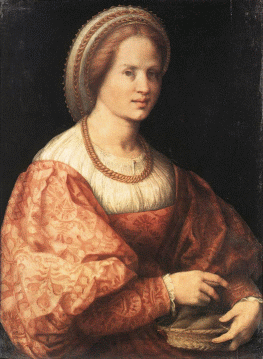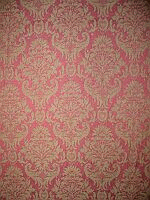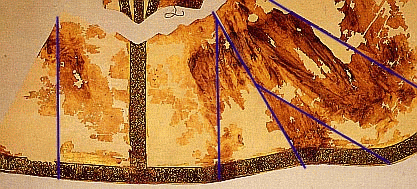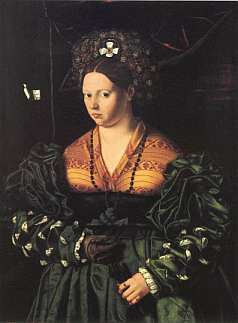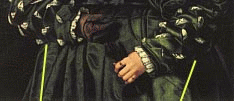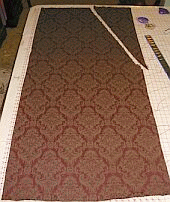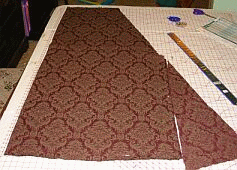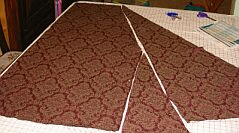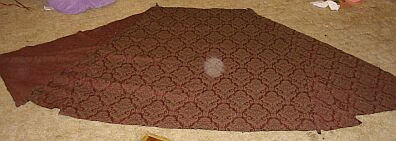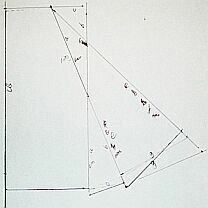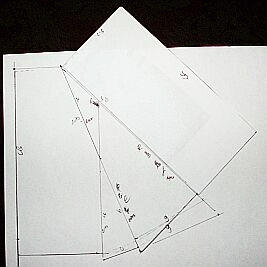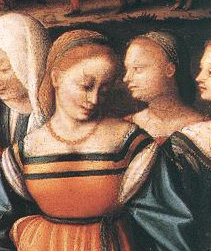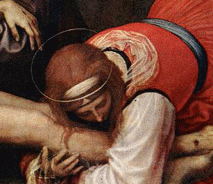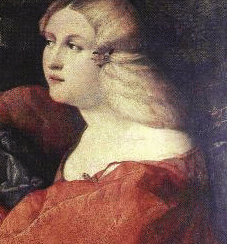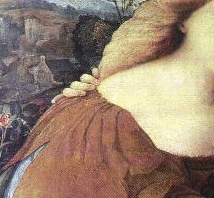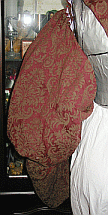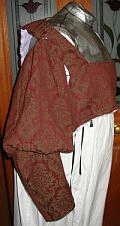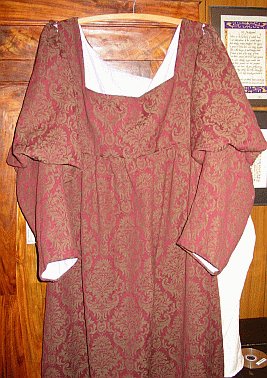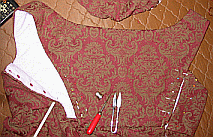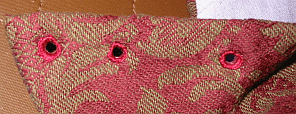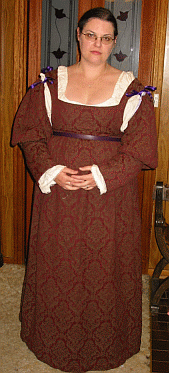I am trying to organise my thoughts better these days, giving my
research, thought processes and reasons for why I do what I do rather
than keeping it all in my head...
Hopefully this will help others in constructing their garb (whether
it serves to show what to do... or what not to do)!
|
|
Ah, the usual panic of 'what shall I wear', with only 4
weeks to go until Festival. Something cool, something easily
washed (for camping and tourneys) from existing mateial
stash:
|
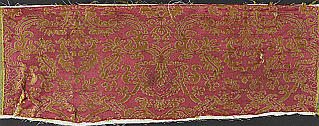
|
I have a few sources for 16thC patterns:
Unfortunately these are from the middle to late 16th C. To date, I have not found pattern books or (wouldn't it be lovely) extant examples of early 16th C (esp. Florentine) gowns! |
|
|
Also, I have a wonderful picture of Eleanor de Toledo's burial gown (from goldsword.com). Eleanor married Cosimo d'Medici in 1539 and resided in Florence. She died in 1562. This gives a time line of the early to middle 16thC. |
||
|
 I decided to cut the front skirt panels on the fold, to
preserve the pattern (modern sensibilities?). The 2 side
gores attatch to the front panels. I tried, as much as
possible, to match bias seams (on gores) with straight edges
and selvages of other skirt pieces. Alcega promotes this
(see farthingale) as it will reduce the drop of the skirt
and give less stretch on the seams. This gave a skirt with a wide hem width, less bulk to sew in at the waist and very economical use of material. I used 1.5 m less than I would have used on my 'standard' skirts of 2 panels of 140cm wide material sewn into a tube. Wahoo! |
|
|
|
|
|
|
Left: the skirt pattern pieces all pinned together (minus the front panels). Below is a sketch of how the pattern pieces were sewn together. The first is half of the pinned pattern (on the left) here. The second shows where the front panels attatch to this (it would not fit in the photo left). |
|
|
|
Total amount of material required for the skirt: (2x 125cm of full width) = 2.5 m + 125 cm of half the width (for the front gores). The other half of this was used for cutting other pattern pieces from the lower half of the sleeves. Attatching the skirt:
|
Gown Body:
Below are some examples of contemporary paintings (mostly Florentine) showing examples of gown 'body''. These show a rounded back, square fronted neckline. Waists could be waist level or higher. Most sleeves seem to be tied to the body at this time.
|
|
|
|
|
Bacchiacca Preaching of St John the Baptist , 1520 |
Fra Bartolomeo, The Deposition 1515 |
Palmo Vecchio The Three Sisters, 1515 |
|
Many contemporary portraits show the skirt pleated into
the 'body'. This can be seen in the examples, right: |
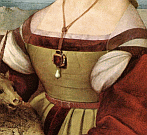 |
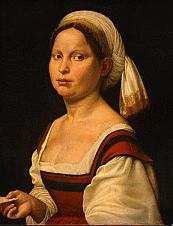 |
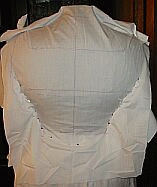 |
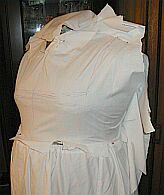 |
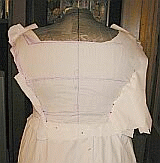 |
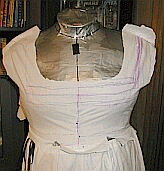 |
|
Toiling the back... |
the front... |
making the wider neckline back |
and the wider neckline at front. |
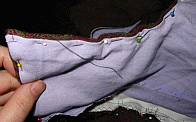 |
Janet Arnold's Pattern of Fashion (though later
16th C and English) show linings being often made of linen
and are hand sewn (blind stitch) to the body. Thanks to some
sage advice, it was suggested that this is a more likely
method used at the time. (left). |
 |
|
|
The original painting of Pontormo's shows what looks like
pleating for the sleeve. For this gown, it was to be more
practical for camping and tourney, so I used a less
voluminous sleeve. I tried pleating, but there was
insufficient material at the sleeve head to give decent
pleats. Honestly, they just looked plain silly... and I must
admit, I prefer cartridge pleating. |
|
|
|
Some pictures of the almost finished gown: Left Right: To finish, some more hand-sewn eyelets on the side-back openings, with a spiral lacing.
|
Finally... though I wore this dress at Festival, I did not get any pictures. I wore it to the Baronial Championship tourney.
|
|
 |
|
|
|
BIBLIOGRAPHY:
- epee.goldsword.com/sfarmer/SCA/Paintings/
- LACMA website: http://www.lacma.org/
- Festive Attyre http://homepage.mac.com/festive_attyre
- Web Gallery of Art: http://www.kfki.hu/~arthp/html/
- Arnold Janet, Queen Elizabeth's Wardrobe Unlock'd, Maney, Leeds, 1988, ISBN:0-901286-20-6
- Arnold Janet, Patterns of Fahsion, MacMillan, London, 1985. ISBN: 0-333-38284-6
- Juan Alcega's Tailor's Pattern Book, 1589 Facimile, Ruth Bean, Carlton, Bedford, 1979.
- The Milanese Tailor's Handbook http://costume.dm.net/Tailors/
- "How much yardage is enough" Susan Reed, 1994. http://patriot.net/~nachtanz/SReed/fabuse.html
- Raphael, Magna Books, Leicester, 1995 ISBN: not listed
